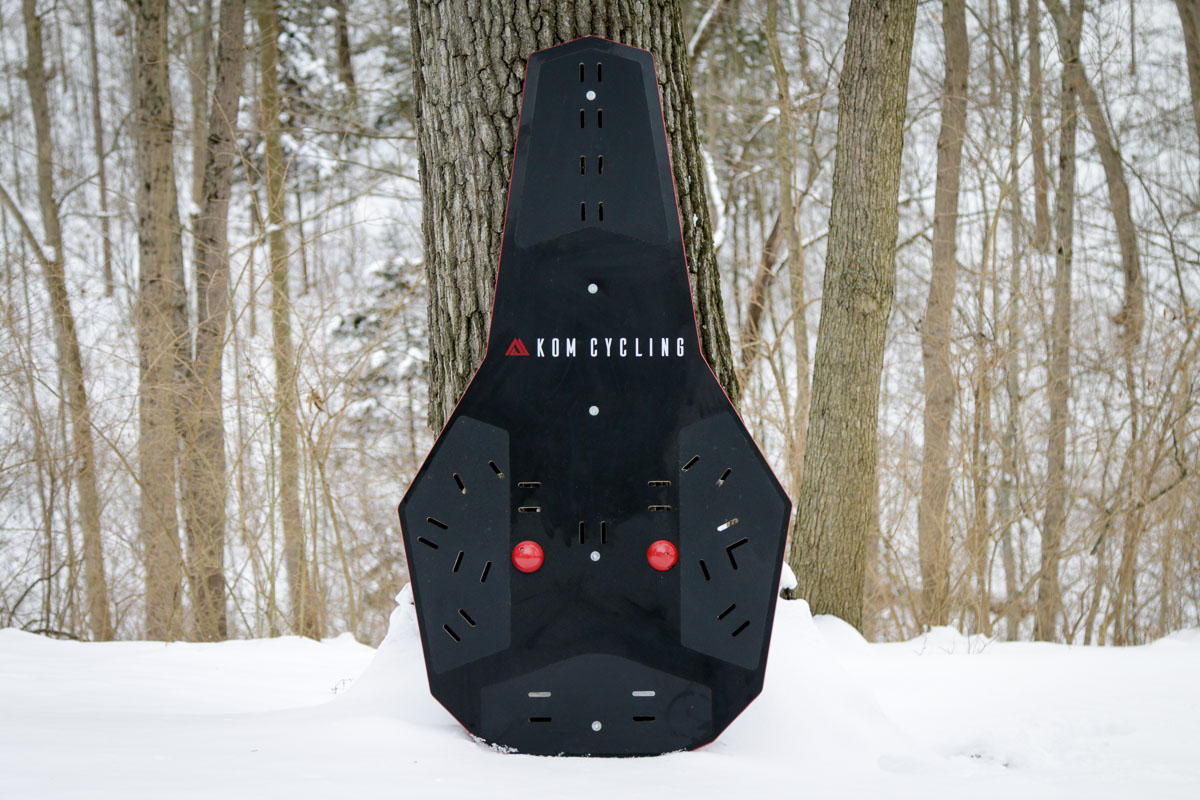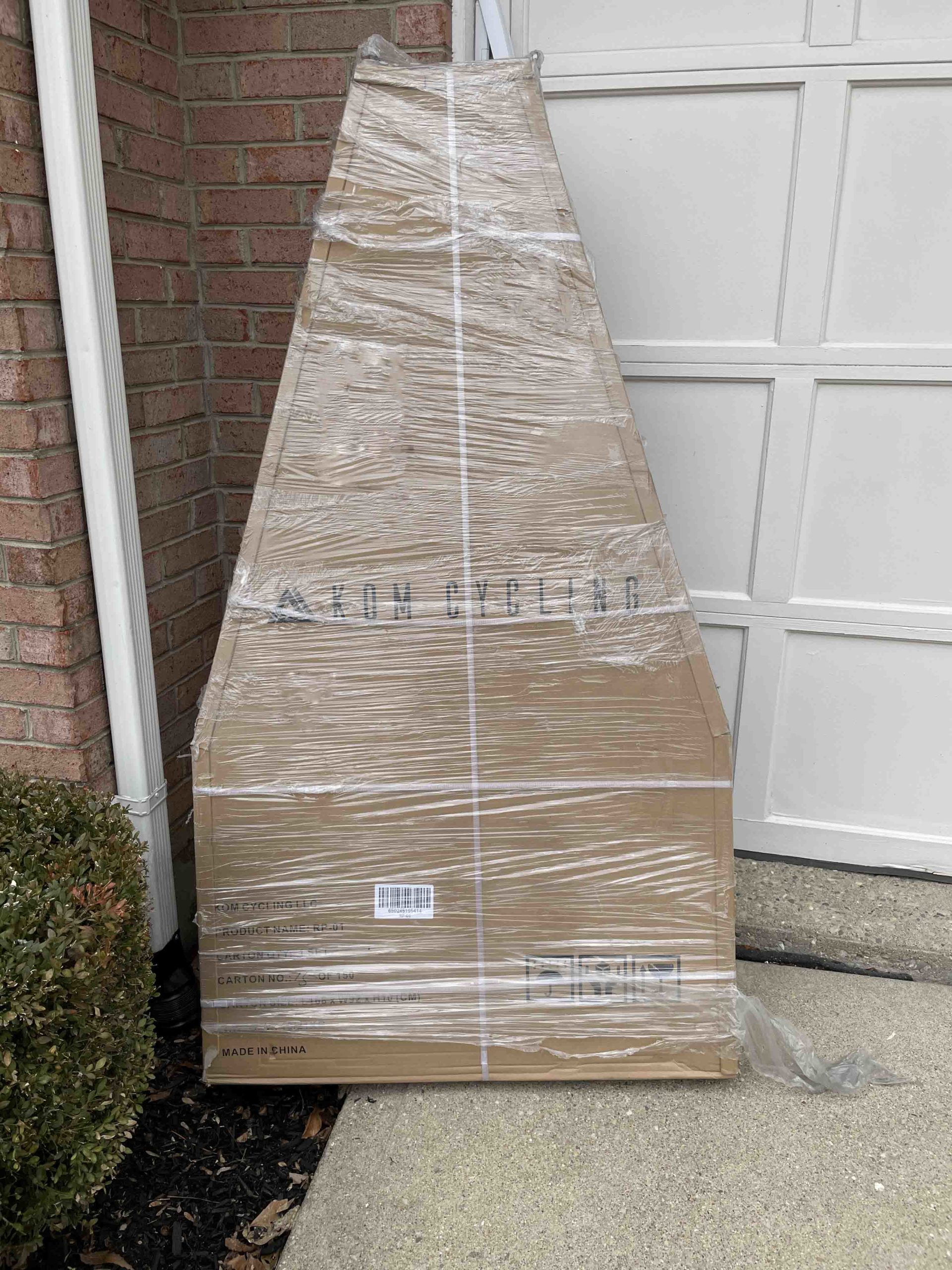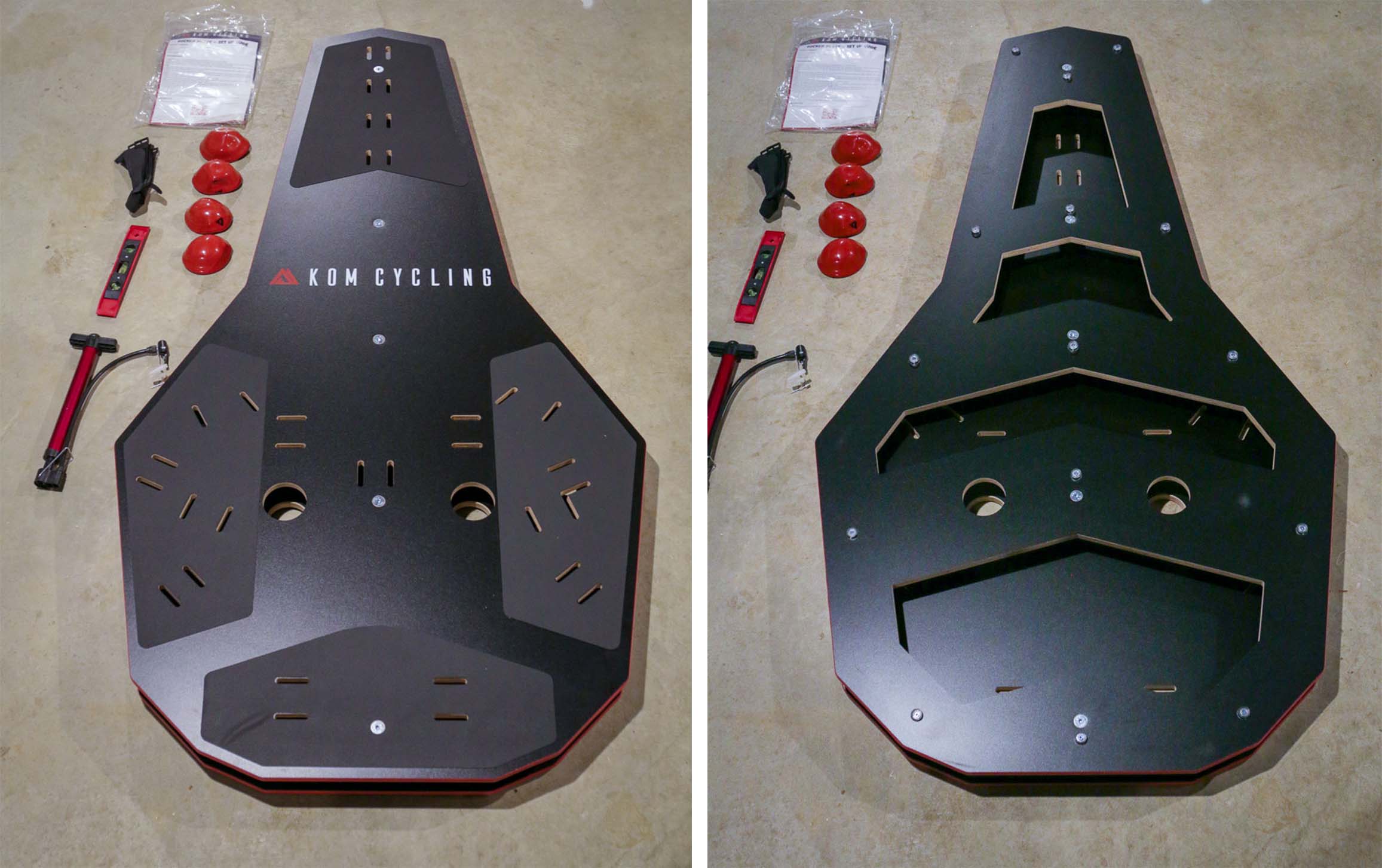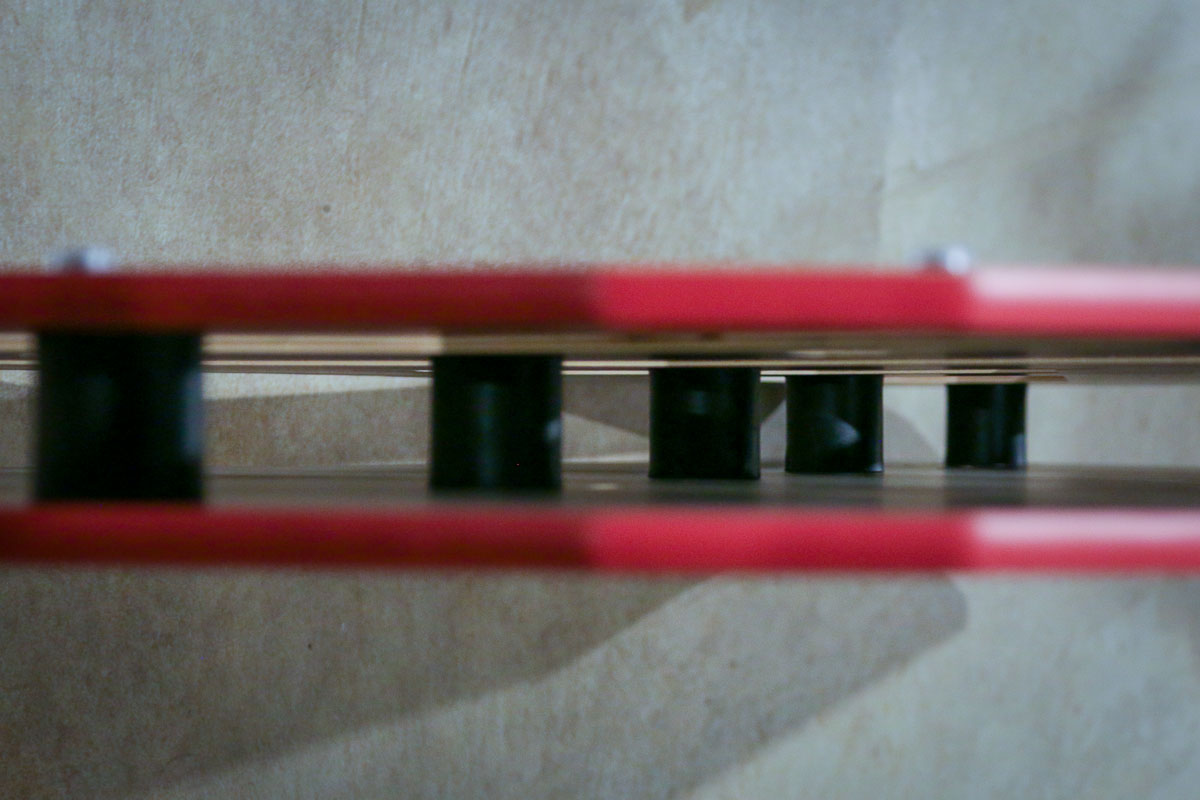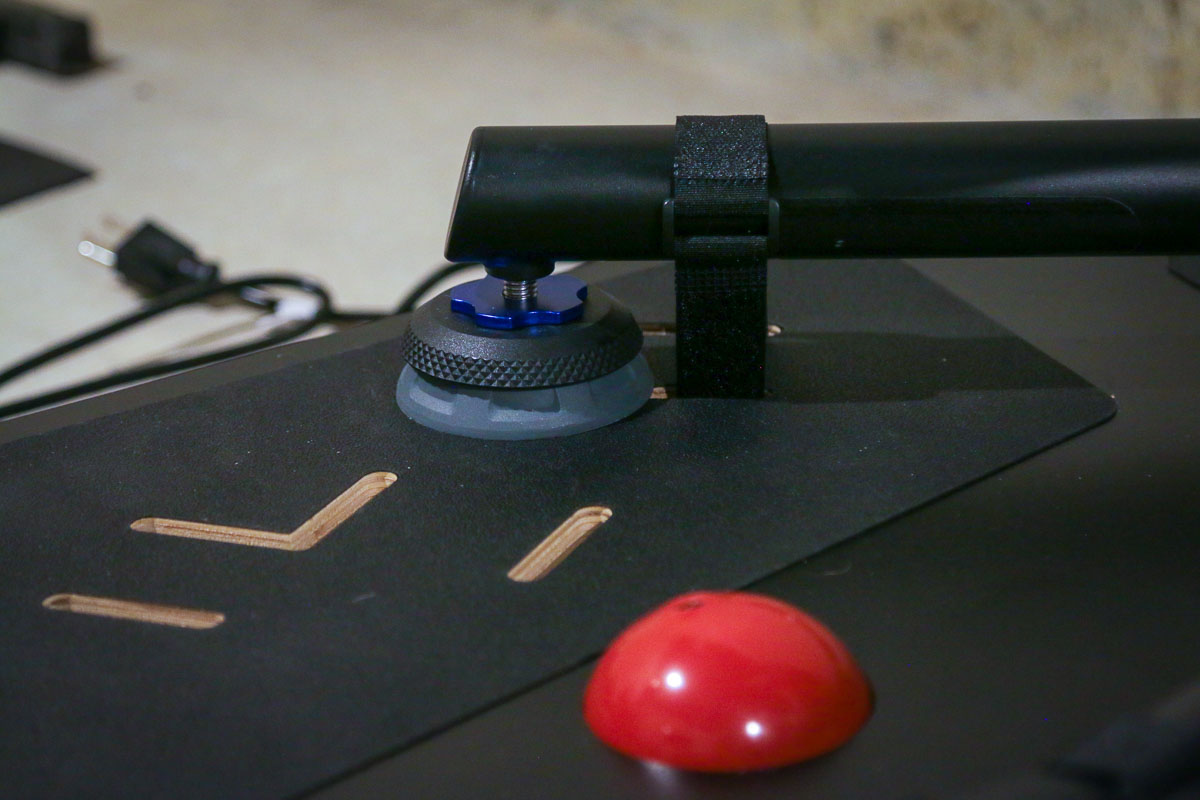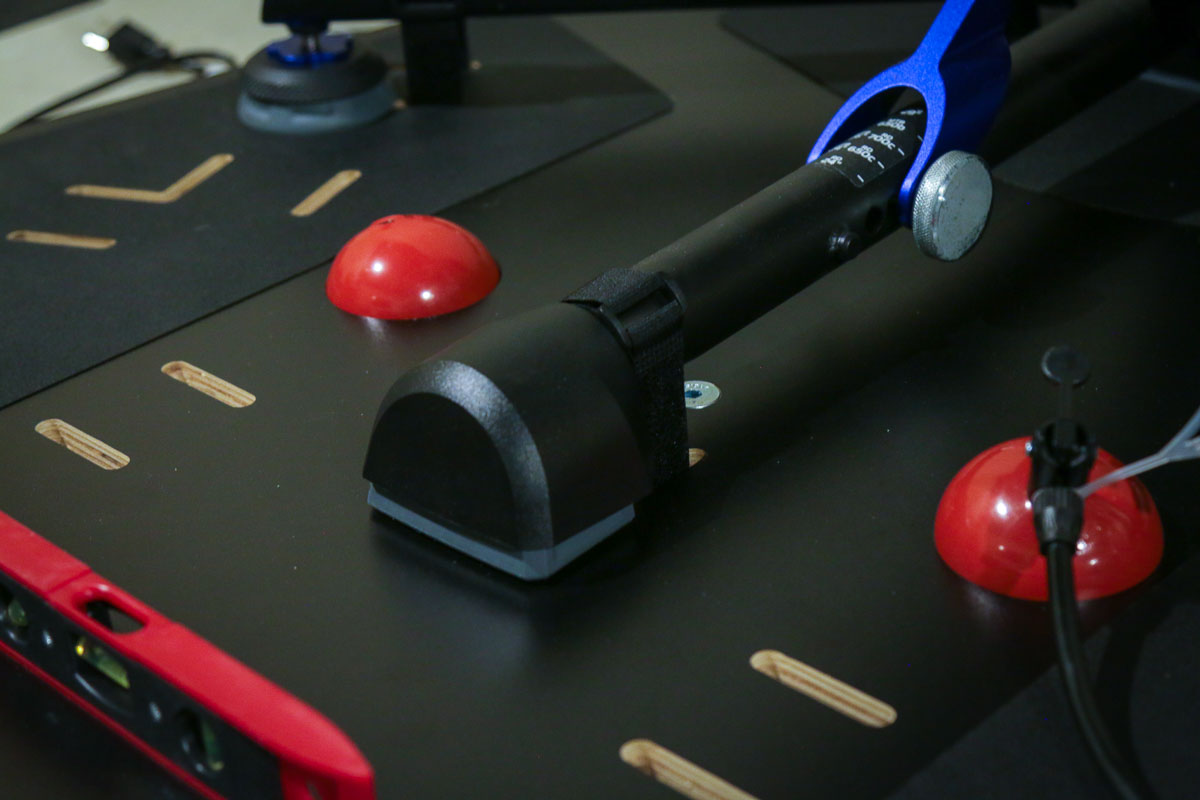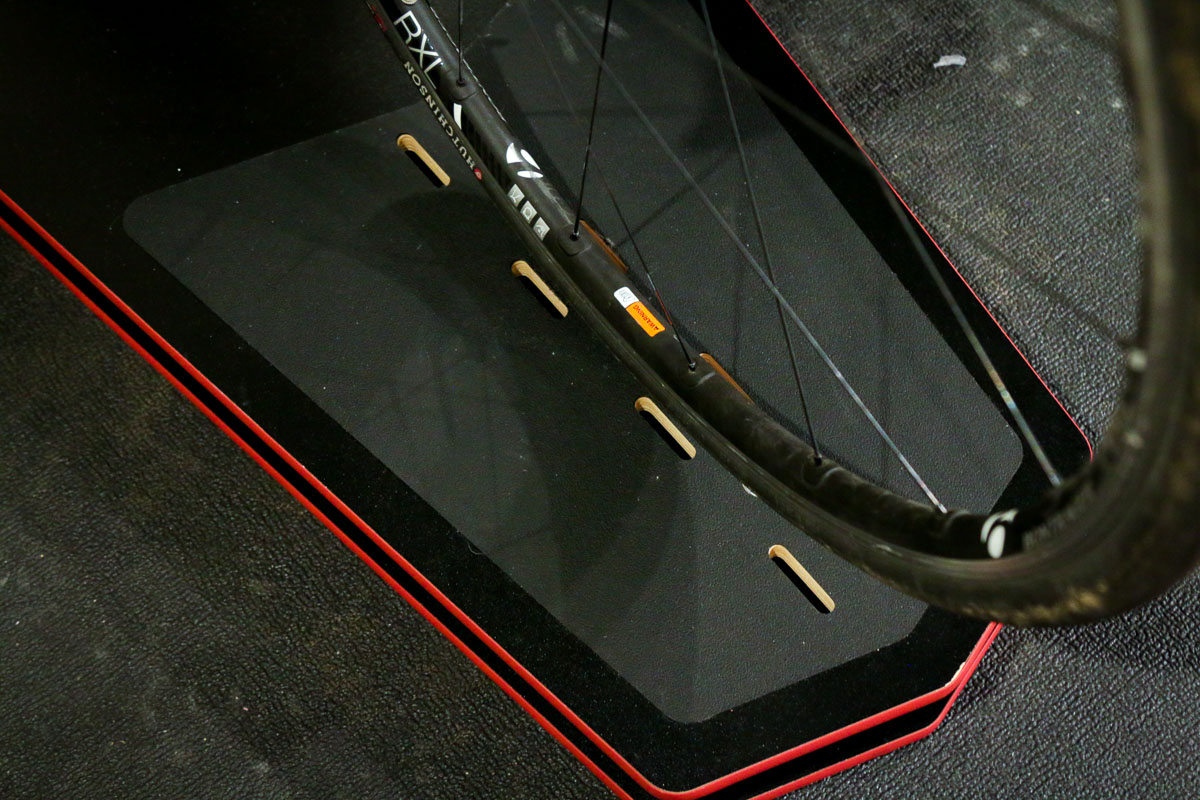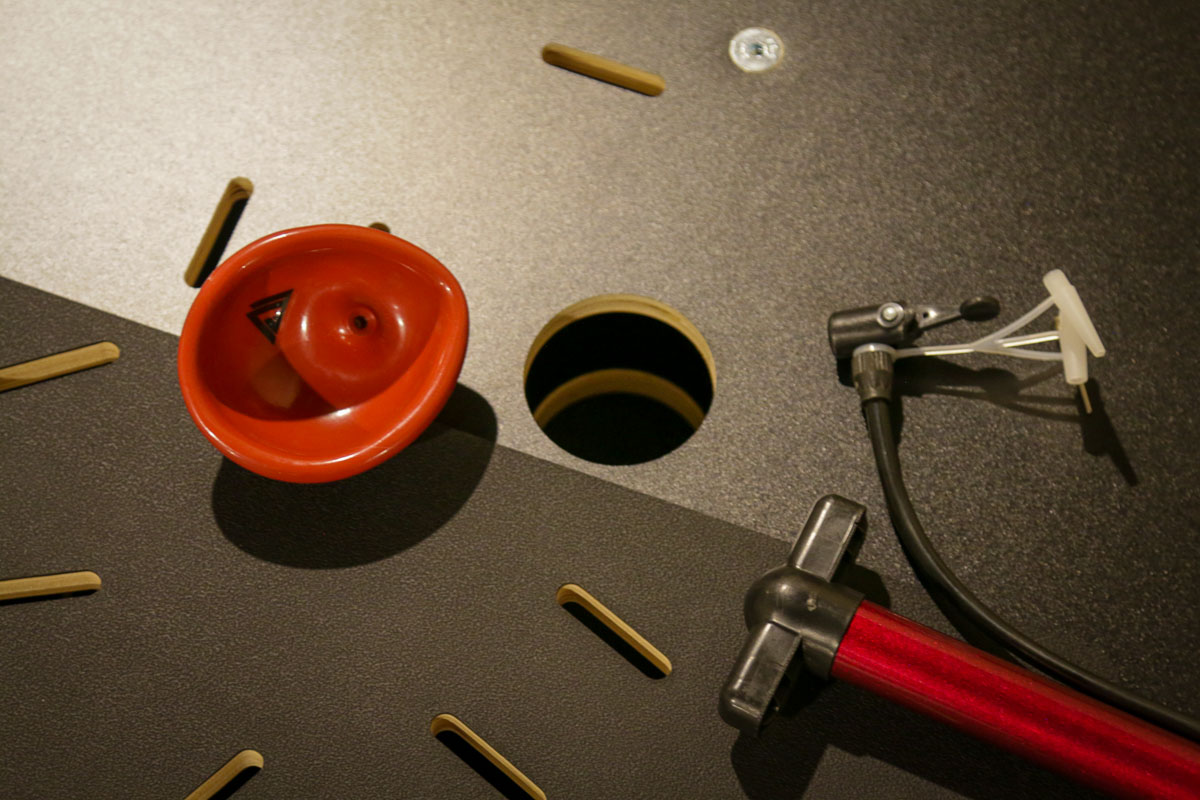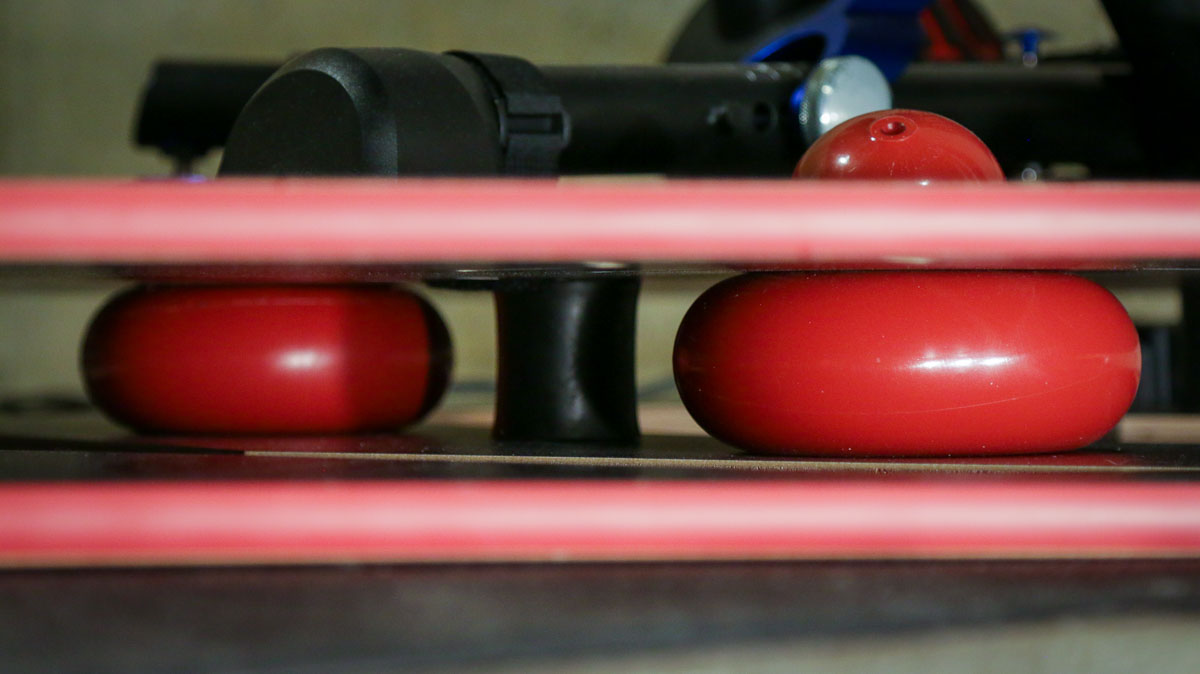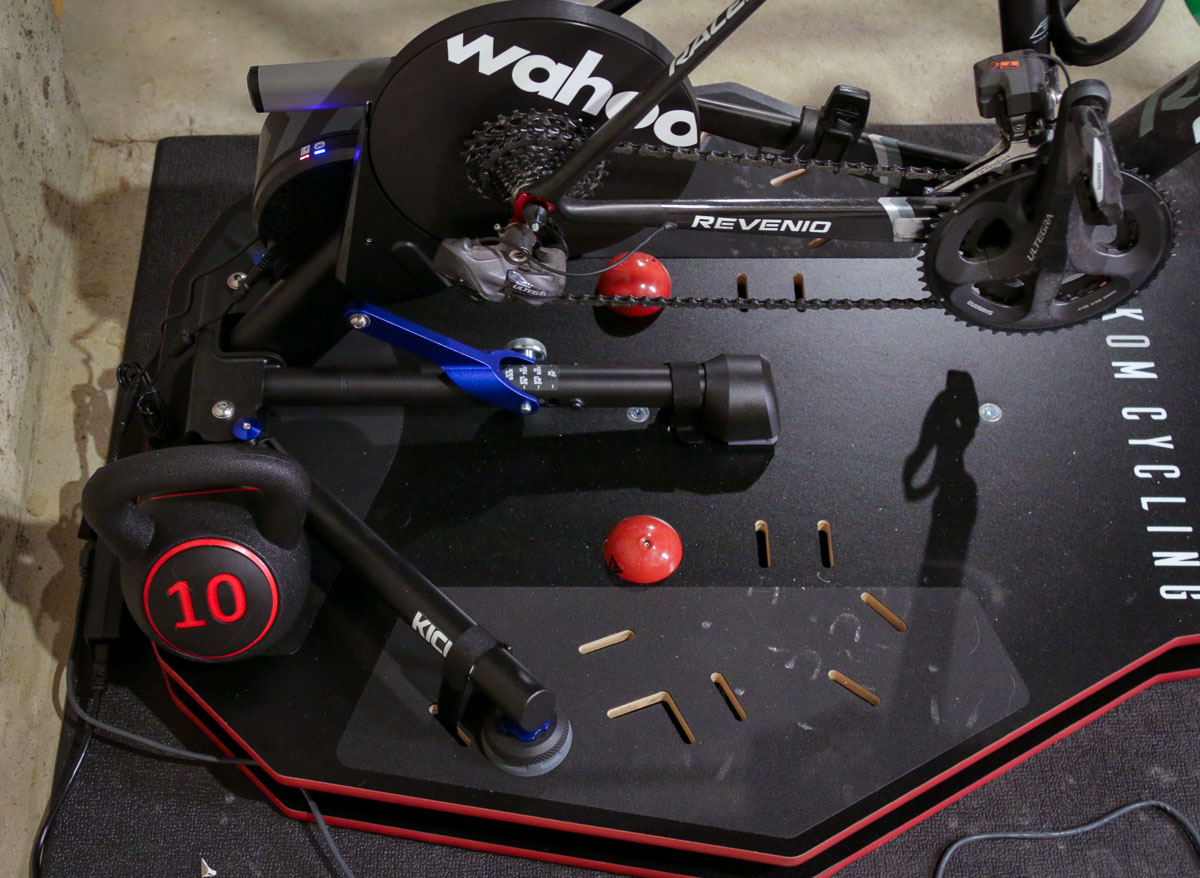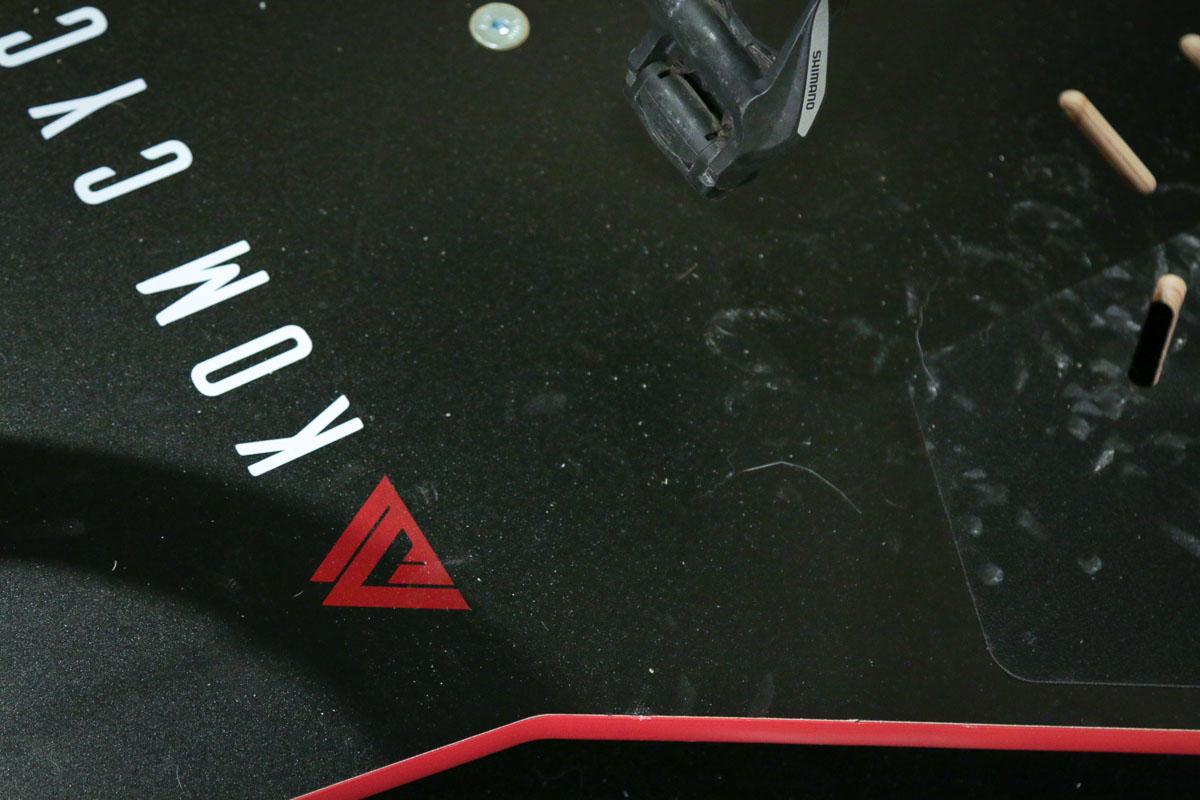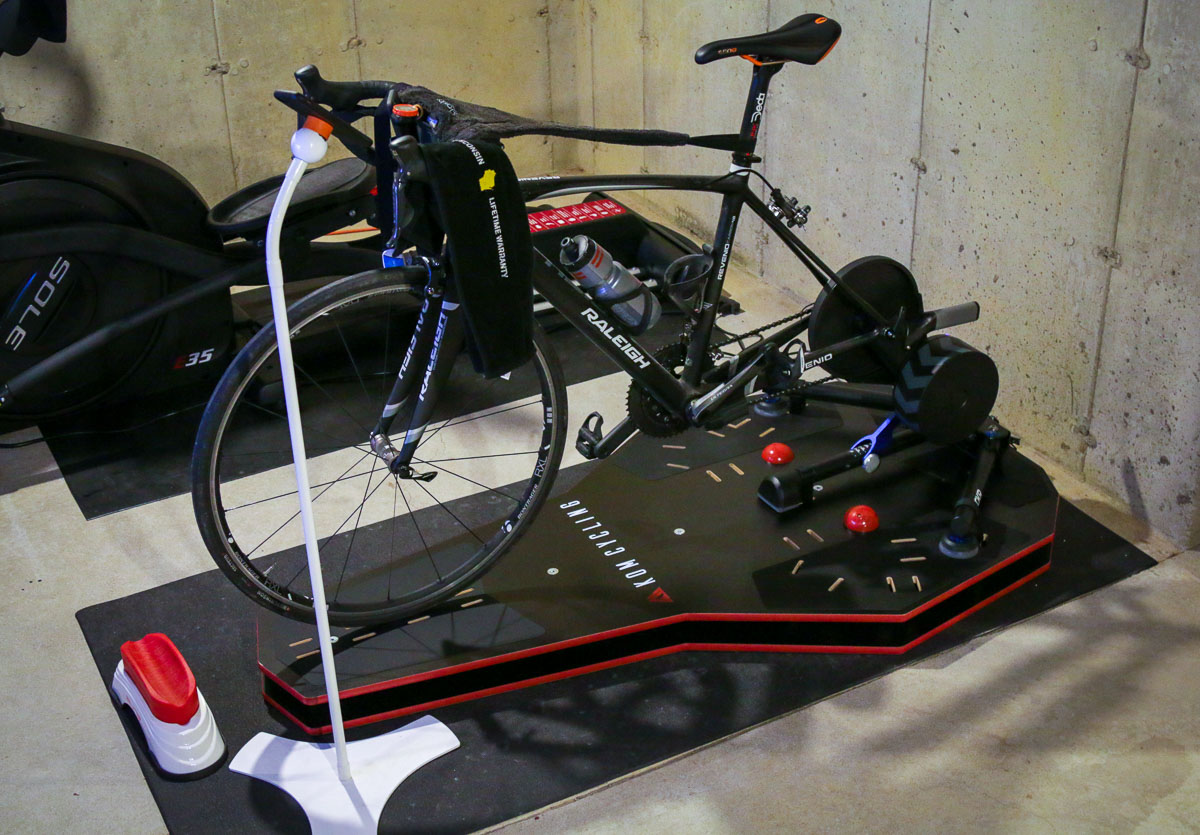Indoor training has been forever changed. Smart trainers have made indoor riding far more engaging and have ushered in a whole new category of riding. Once you’re hooked on a smart trainer, you start looking for other ways to make indoor riding more enjoyable and, dare I say, more realistic. If you’re going to go to the effort of pedaling in place, you might as well make the most of it, right?
As a concept, trainer rocker plates are nothing new. But with more cyclists than ever spending a lot more time doing laps in Watopia, rocker plates are getting to be a much more common accessory for the home training studio.
What is a rocker plate? Like it sounds, they’re basically a platform for your trainer+bike that rocks side to side, returning to a balanced centered position. The devices are said to provide a more life-like riding feel on the trainer that encourages you to engage more of the muscles you’d have to use if you were riding outside.
Over the years, there have been a number of DIY kits available to build you own. That’s great if you have the time, the tools, and the know-how, but let’s be honest – that’s not most people. If you’d rather have a turnkey solution with an approachable price tag, the new Indoor Rocker Plate RPV1 from KOM Cycling could be the answer.
Shipped in a giant flat box that vaguely resembles a coffin, the RPV1 arrives mostly assembled.
What’s in the Box?
Weighing in at 42lbs, the RPV1 consists of two Lauan plywood platforms that are anchored down the middle with rubber isolation mounts. Measuring 64″ long, 34.5″ wide at the back, and 11.5″ wide at the front, the platform is big, but not so big that it will take up the whole room. It also sits at 3.75″ tall, which places you a bit higher on the trainer – perhaps important to consider if your pain cave is in a basement with low ceilings.
The bottom plate has large cutouts to decrease the overall weight, and help you gain access to the strap slots from underneath. You’ll also find 15 rubberized gripper feet on the bottom to protect your floor and keep the platform in place. I kept a rubber mat underneath just for sweat collection purposes, but you could get away without using one since the platform does a decent job at keeping it off your floors.
Both platforms also feature two round holes for the inflatable balls that allow you to tune the plate.
Mounting a Trainer
On the top platform, you’ll find 17 sets of mounting slots that are positioned to work with most trainers on the market. The platform includes five Velcro straps that you simply route through one slot, then back up through the other, around the trainer leg, through the loop, and then tighten it back down. You can get the straps surprisingly tight – tight enough that the AXIS feet of the KICKR V5 were rendered stationary. Or at least, I couldn’t detect any movement of the trainer on the platform.
If you’re wondering about the difference in feel between the AXIS feet and the RPV1, they’re not even in the same ball park. I maintain that the AXIS feet are a great upgrade for an existing KICKR trainer to provide a little movement, but if you’re after the movement of a true rocker plate, your money is better spent on something like the RPV1 than the KICKR V5 if you’re considering purchasing the full trainer solely for the AXIS feet feature.
Pro Tip: On a trainer like the KICKR, do the strap for the middle support last, after all the other four straps are tight. That allows you to tip the platform on its side (without the trainer moving), and access the bottom of the platform to route the Velcro strap. It also helps if you position the bike, while it’s mounted on the trainer with the straps slightly loose. Once you have centered the bike properly on the platform, cinch down all the straps as tightly as possible.
There are also mounting slots for a strap to use around the front wheel or front wheel support. So far, I haven’t found the need to actually use one though. The front wheel doesn’t really go anywhere, and I have been having a lot of fun testing out the Beta version of Hustle City on this thing which requires you to turn the front wheel.
I’m hoping to get an Elite Sterzo in to test with this thing as a result, since the rubberized grip tape under the front tire makes it difficult to turn. I have to say that while rocker plates were designed for things like “decreasing static pressure to your joints,” they make cycling based games like Hustle City really, really fun. The plate allows you to actually lean into turns while steering the front end, which actually makes it feel like you’re riding. It made me feel like I was a kid again, playing one of those arcade games where you sat on top of a fake motorcycle leaning into the turns. Only this way, you’re actually getting some exercise.
Under Pressure
Each RPV1 ships with four of the inflatable, balls, but you’ll only need two – the others are spares. The RPV1 also includes a pump with a needle valve that you’ll need to inflate the balls. I found it easier to slightly inflate each ball, then tuck it between the two platforms, and then finish inflating it, rather than to put them in deflated.
Once properly inflated, from the top it doesn’t look like the balls are doing much. But if you look underneath, it’s almost comical how much they expand. This gives you a better idea of why spares are included. I have yet to need them, but I’d assume depending on your weight, riding style, and use, you may need to replace these occasionally.
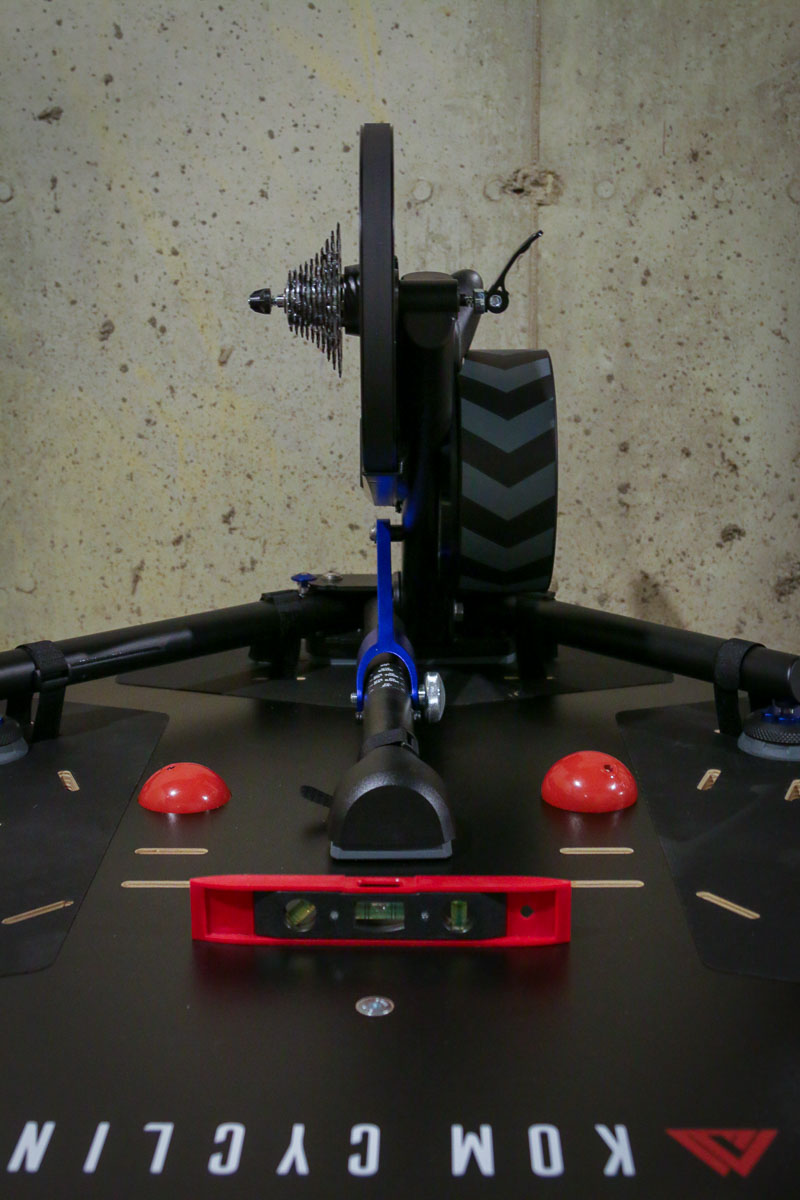
Importantly, the inflatable balls allow you to do two things. One, they allow you to adjust how easy it is to rock the platform back and forth to reach the full 6.5° of movement on each side. Beginners will probably want to use a stiffer setup to get the hang of things, but more advanced riders will benefit from a softer set up which requires more focus on your balance and use of your core.
Second, the adjustability allows you to level the platform no matter what your setup.
All about Balance
Many high end smart trainers, like the Wahoo KICKR feature large, heavy flywheels which are offset to one side of the trainer. It’s possible with the inflatable balls to even out the platform with these trainers by inflating the left ball more than the right.
However, I found that it resulted in a better feel if I placed a 10lb kettlebell on the right side of the platform, behind the leg (other forms of weight may work better, but I used what I had). It still required some adjustment to get the platform dialed with the included spirit level, but this setup seemed to result in more even inflation between the two sides. As a result, the feel of rocking to each side was more uniform. Depending on your trainer, you may want to experiment with different weights.
Note that the photo above illustrates what not to do with the wires coming from your trainer. In the process of moving things around for the photos, the ethernet cable for my Wahoo KICKR Direct Connect found its way between the two platforms. You want to be very sure there isn’t anything between the two platforms before stepping onto it since it is possible for the two to touch at the back, which could pinch anything in between – like children’s fingers, pets, etc. They shouldn’t be near a moving trainer anyways, but just a heads up.
Any Negatives?
After a month’s use, the only ding I have against the RPV1 is a lack of grip tape around the KOM Cycling logo. I found myself occasionally stepping forward off the saddle, and placing my foot in this area, which can be slippery in cycling cleats. You can see by the marks in the other photos that most of the time you step onto the platform towards the back where the grip tape is, but I stepped outside of that enough that I wish the grip tape covered a larger area. You could easily remedy this with some added grip tape of your own though.
Riding Away
Over the years, I’ve learned that anything I can do to make indoor training more enjoyable will pay off in the long run. For a number of reasons, being able to run down to the basement and get my heart rate going on a day where I can’t make it outside for a ride is priceless. KOM’s RPV1 isn’t exactly cheap at $449.99, but it looks good, it’s well built, easy to set up and adjust, and a joy to use. If you’re looking to take your indoor training to the next level, it’s definitely worth a look.
And about that name – RPV1? Obviously, RP stands for Rocker Plate, but the V1? KOM Cycling tells us that they “big plans for building the future of indoor cycling and that this won’t be the only Rocker Plate and new Indoor product that we will be releasing!”
Like most things in the bike industry right now, the RPV1 just sold out. But you can reserve one from the next batch which KOM hopes to ship by March 15th by clicking the link below.
